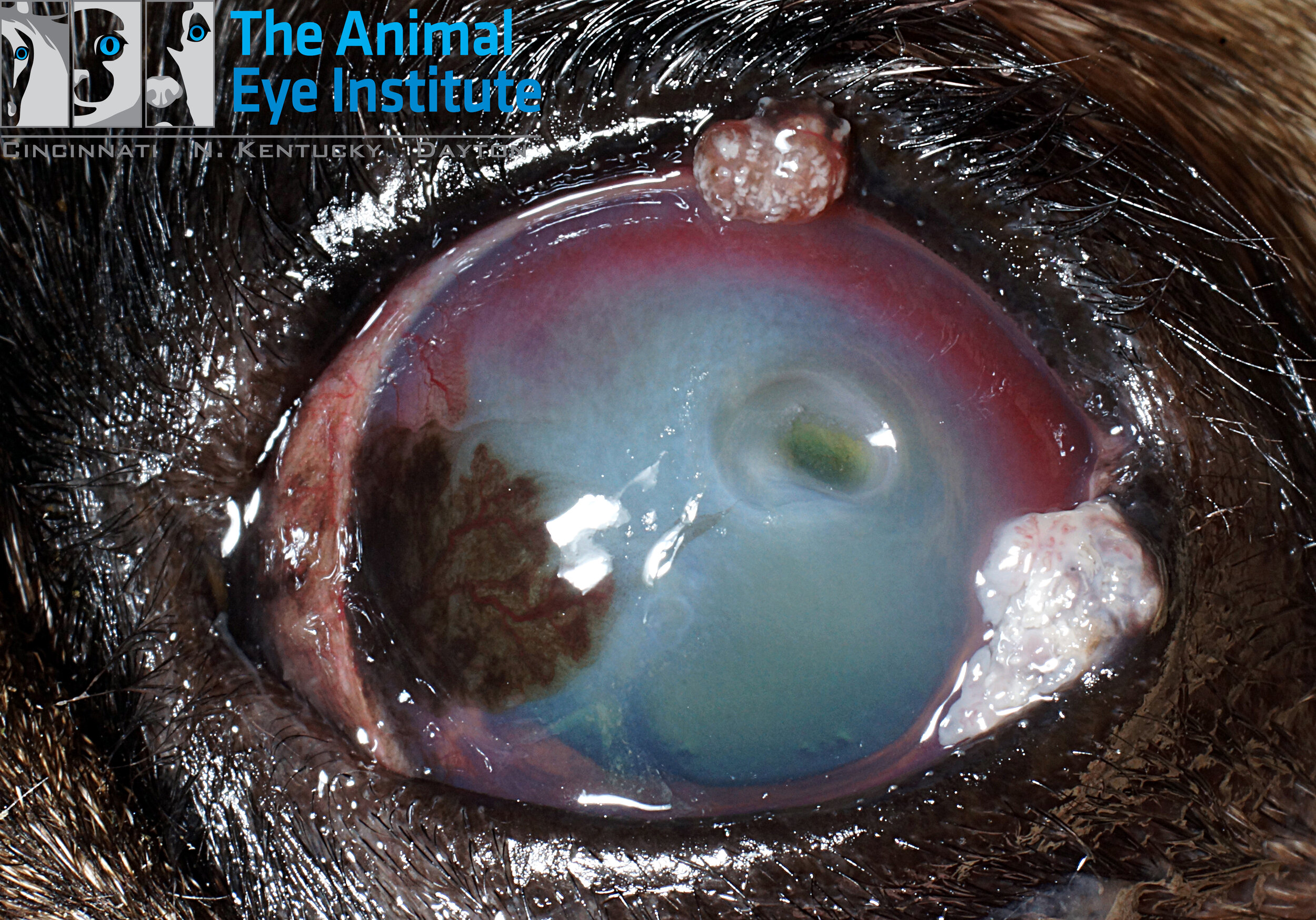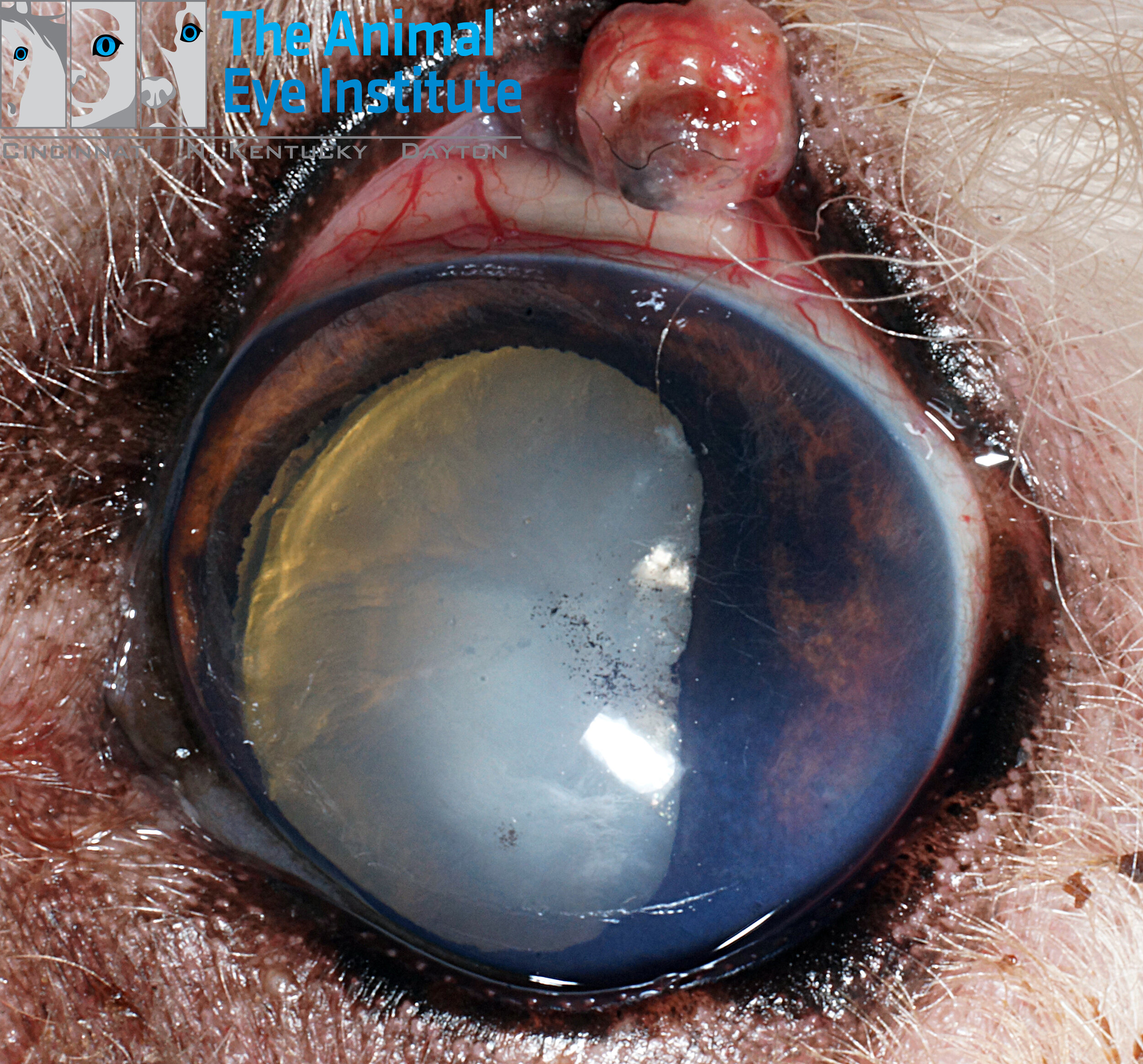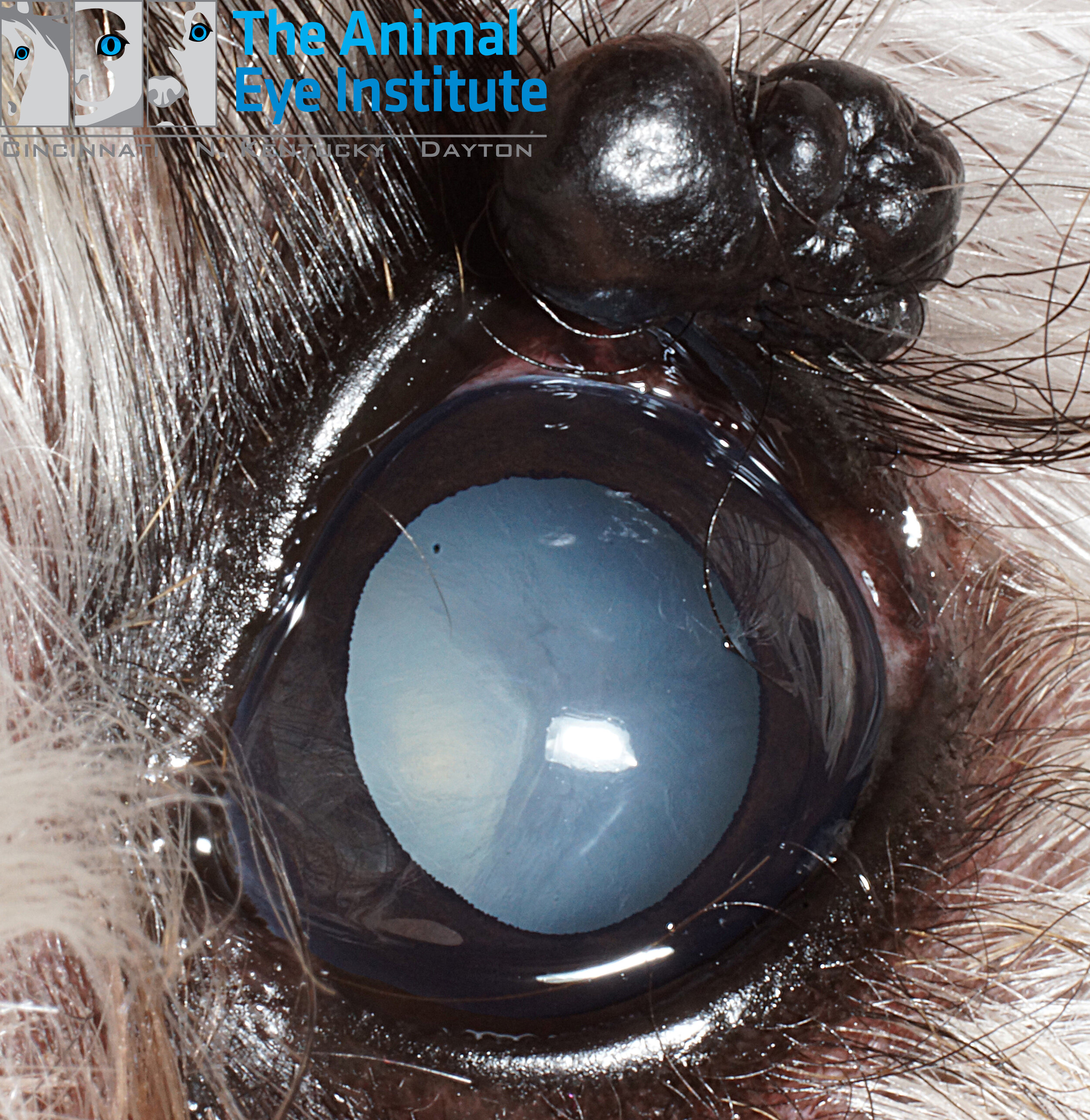Canine eyelid masses
Eyelid masses commonly develop in dogs. They are more common to develop in older dogs but can occur in dogs of any age. The most common types of canine eyelid masses are Meibomian gland adenomas, papillomas, and melanomas. Approximately 95% of canine eyelid masses are benign and do not spread to other areas of the body; however, they do have the potential to cause structural changes to the eyelid and changes to the cornea due to chronic rubbing. This chronic rubbing and irritation can cause corneal ulceration, increased tearing, conjunctival redness, and formation of corneal vessels and pigmentation. Due to the potential for discomfort and decreased vision, removal of eyelid masses is typically recommended.
Related: Get our Guide to Corneal Disease
Eyelid masses are treated by surgical removal. Sometimes if the mass is very large and complete resection is not possible, surgical removal is combined with cryotherapy, or freezing of the mass removal site, to prevent the return of tumor cells. After removal, the eyelid mass is submitted for biopsy in order to obtain a definitive diagnosis. Even though the most common types of eyelid masses have characteristic physical features, a definitive diagnosis cannot be made without histologic examination under a microscope. Surgical excision is typically curative, and it is rare for eyelid masses to return after surgery.




